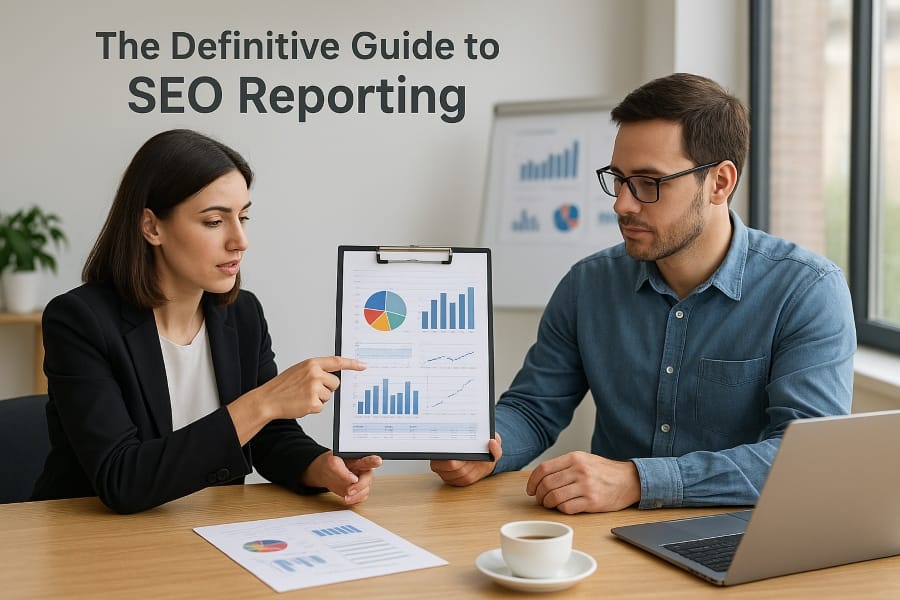In today’s digital landscape, SEO is no longer just about climbing the ranks of traditional search results. Instead, the goal is to dominate Google SERP visibility by securing rank across the diverse and evolving elements of Google’s blended SERPs.
As artificial intelligence continues to redefine search experiences, understanding and optimizing for SERP features is more essential than ever. Let’s explore how you can adapt your SEO strategy to thrive in 2025 and beyond.
Table of Contents
Redefining SEO: Beyond Traditional Rankings
The core objective of SEO remains the same: driving targeted traffic to grow your business. However, the approach to achieving this has transformed significantly. Gone are the days of focusing solely on achieving a high rank among the classic “10 blue links.”
Modern search results have evolved into complex ecosystems, featuring various elements designed to meet diverse user intents. As Google integrates AI technologies, SERPs are becoming increasingly multidimensional, requiring brands to take a holistic approach to SEO.
Today’s challenge is twofold:
- Achieve prominence on the search results page.
- Maximize exposure across multiple SERP features.
The brands that succeed in this landscape will recognize the value of blended SERPs and strategically align their content to leverage these opportunities.
Google SERP Visibility in 2025: A Multi-Feature Landscape
Modern SERPs are composed of far more than organic listings. According to recent data, nearly all search results (99%) include at least one SERP feature, making it imperative for brands to optimize beyond the basics.
Here’s a breakdown of some of the most prevalent SERP features:
- 93% Related searches
- 72% Sitelinks
- 57% People Also Ask (PAA)
- 55% Reviews
- 50% Images
- 20% Knowledge Panel
- 18% Local Pack
- 18% Video
- 15% Products
- 7% AI Overviews
- 4% Featured Snippets
- 4% Top Stories
- 1% Carousel
These features cater to various user intents, from providing quick answers to highlighting visually rich content or local business details. To maximize your presence, it’s essential to identify which features align with your target keywords and audience.
Examples of Blended SERPs
Example 1: “Modern Desk Lamps”
A search for “modern desk lamps” reveals a SERP filled with diverse elements:
- Text Ads: 5 results
- Shopping Listings (Organic): 22 results
- Images: 7 results
- People Also Ask: 4 results
- Traditional Organic Listings: 10 results
In this case, the first organic listing appears as the 18th result on the page, showcasing the prominence of other SERP features. For a search query with clear commercial intent, shopping ads, and visuals dominate, illustrating the need for image-rich and shopping-focused content strategies.
Example 2: “Best Mountain Hikes”
For the query “best mountain hikes,” the SERP includes:
- Featured Snippet: 1 result
- People Also Ask: 5 results
- Images: 6 results
- Traditional Organic Listings: 8 results
- Videos: 4 results
- Related Searches: 7 results
This example highlights the broad informational intent behind the query. The featured snippet provides a quick answer, while the presence of images and videos reflects the visual nature of outdoor and travel-related content.
For this query, the blend of SERP features demonstrates that users are likely seeking detailed guides, scenic visuals, and actionable insights to plan their adventures.
A Strategic Framework for SERP Visibility
To boost visibility in 2025, brands must adopt a systematic approach to optimizing for multiple SERP features. Follow this three-step process:
1. Search: Identify Relevant Keywords
Start by pinpointing the keywords most relevant to your goals. Use tools like Google Search Console, PPC data, and keyword research to uncover opportunities.
2. Analyze: Map the SERP Layout
Examine the SERP for each target keyword to identify prominent features. Document the structure to guide your optimization efforts.
3. Optimize: Tailor Your Strategy
Use insights from your analysis to fine-tune your content for maximum visibility across key SERP features.
SERP Feature Optimization Tips
- Related Searches:
Incorporate semantically related terms into your content to align with related search suggestions. - Sitelinks:
Maintain a clear website structure with strong internal linking to improve the likelihood of generating sitelinks. - People Also Ask (PAA):
Address common questions with concise, value-driven answers in FAQ-style content. - Reviews:
Add schema markup to product pages and encourage customer reviews to enhance credibility. - Images:
Optimize file names and alt text, and use image sitemaps to improve indexing. - Knowledge Panel:
Claim your Google Business Profile and ensure consistent, accurate business information. - Local Pack:
Optimize your Google Business Profile with local keywords and regular updates. - Video:
Create engaging video content and optimize metadata for platforms like YouTube. - Products:
Use product schema markup and submit feeds to Google Merchant Center. - AI Overviews:
Produce comprehensive, structured content that directly answers user queries. - Featured Snippets:
Format content to address specific questions with bullet points, tables, or lists. - Top Stories:
Publish timely, news-focused content and implement article schema markup. - Carousel:
Develop interrelated content pieces with schema markup to appear in carousel formats.
Strategy Meets Tactics
Achieving visibility on Google’s blended SERPs isn’t just about SEO—it’s about understanding your market and adapting your approach. Sometimes, the solution may involve revising your product strategy to align with user behavior reflected in search results.
For example:
- Custom Furniture Kits: Introduce modular, budget-friendly kits to compete with mass-market DIY options.
- High-End Travel Packages: Create entry-level offerings to attract broader audiences and upsell premium experiences.
These case studies demonstrate the importance of integrating SEO insights into broader business strategies to maximize search visibility.
Embrace the Future of SEO
As search continues to evolve, success will depend on your ability to adapt. By understanding the nuances of blended SERPs and strategically optimizing for key features, you can secure your place at the top of this dynamic digital landscape.




